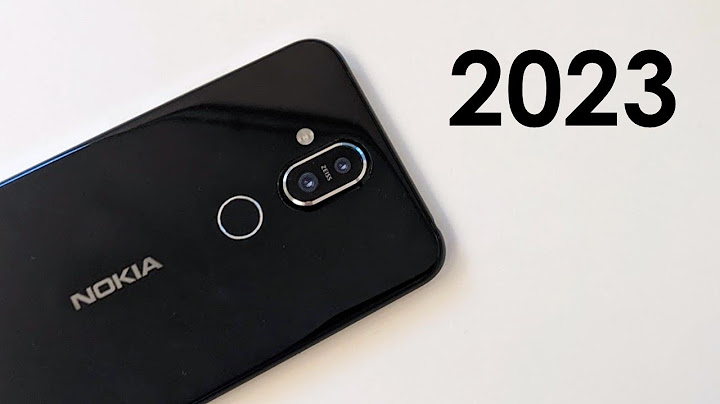 Show Delivery from the EU! In stock! product ID: 406588 Free delivery over $59! Free delivery! Free delivery by air via USPS or UPS within 4-6 business days. More information Free delivery by air from $59 via USPS or UPS within 4-6 business days. For orders under $59, the delivery cost is $9. More information
Algeria, Australia, Austria, Azerbaijan Republic, Bahrain, Belarus, Belgium, Bhutan, Bosnia and Herzegovina, Brazil, Bulgaria, Cambodia, Canada, Chile, Cyprus, Czech Republic, Denmark, Estonia, Finland, France, Germany, Greece, Honduras, Hong Kong, Hungary, Iceland, India, Indonesia, Ireland, Israel, Italy, Japan, Jordan, Kazakhstan, Latvia, Lebanon, Luxembourg, Malaysia, Maldives, Mexico, Moldova, Netherlands, New Zealand, Nigeria, Norway, Oman, Pakistan, Philippines, Poland, Portugal, Qatar, Republic of Croatia, Romania, Saudi Arabia, Singapore, Slovakia, Spain, Sweden, Switzerland, Taiwan, Thailand, Turkey, United Arab Emirates, United Kingdom, Uzbekistan, Vietnam, Worldwide Corporate Headquarters Unit A, 1/F, Hoover Industrial Building, 38 Kwai Cheong Road, Kwai Chung, Hong Kong Southeast Asia Headquarters 2nd Floor, TSA Building, 43 Nuyen Son Ha, District 3, HCMC, Vietnam the lips, keeping them soft and plump. It's also formulated with a Berry Complex to remove dead skin cells, moisturize and improve the elasticity of the lips, leaving you with a smooth, kissable pout in the morning. Uploaded by: hzelnuts on 05/02/2021 Ingredients overviewPolyisobutene,Diisostearyl Malate,Octyldodecanol,Petrolatum,Microcrystalline Wax,Beeswax,Ceresin,Macadamia Ternifolia Seed Oil,Sorbitan Sesquioleate,Tocopheryl Acetate,Honey (10Pbb),Rubus Idaeus (Raspberry) Fruit Extract*,Rubus Fruticosus (Blackberry) Fruit Extract*,Euterpe Oleracea Fruit Extract*,Vaccinium Myrtillus Fruit Extract*,Vaccinium Macrocarpon (Cranberry) Fruit Extract*,Ribes Nigrum (Black Currant) Fruit Extract*,Vaccinium Angustifolium (Blueberry) Fruit Extract*,Fragaria Chiloensis (Strawberry) Fruit Extract*,Ci 77492,Polyglyceryl-2 Triisostearate,Fragrance (Parfum),Benzyl Alcohol,Linalool Highlights
alcohol-freeKey IngredientsOther IngredientsSkim throughIngredient name what-it-doesirr.,com. ID-Rating Polyisobutene viscosity controlling Diisostearyl Malate emollient, surfactant/cleansing Octyldodecanol emollient, perfuming Petrolatum emollient Microcrystalline Wax viscosity controlling Beeswax emollient, viscosity controlling, emulsifying, perfuming0,0-2 Ceresin viscosity controlling0,0 Macadamia Ternifolia Seed Oil emollientgoodie Sorbitan Sesquioleate emulsifying0,0-1 Tocopheryl Acetate antioxidant0,0 Honey (10Pbb) soothing, moisturizer/humectant, antimicrobial/antibacterialgoodie Rubus Idaeus (Raspberry) Fruit Extract* antioxidant, soothinggoodie Rubus Fruticosus (Blackberry) Fruit Extract* Euterpe Oleracea Fruit Extract* Vaccinium Myrtillus Fruit Extract* Vaccinium Macrocarpon (Cranberry) Fruit Extract* Ribes Nigrum (Black Currant) Fruit Extract* emollient, perfuming Vaccinium Angustifolium (Blueberry) Fruit Extract* soothing Fragaria Chiloensis (Strawberry) Fruit Extract* Ci 77492 colorant0,0 Polyglyceryl-2 Triisostearate emulsifying Fragrance (Parfum) perfumingicky Benzyl Alcohol preservative, perfuming, solvent, viscosity controlling Linalool perfumingicky Prreti Honey&Berry Lip Sleeping Mask Ingredients explained A polymer (big molecule from repeated subunits) that's used as a gloss improver for lipsticks and lipglosses. Its stickiness also helps lip products to stay on longer. Combined with polyacrylate-13 and polysorbate 20, it forms a very effective tickener-emulsifier trio. We don't have description for this ingredient yet. A clear, slightly yellow, odorless oil that's a very common, medium-spreading emollient. It makes the skin feel nice and smooth and works in a wide range of formulas. Also-called: Petroleum jelly, Vaseline | What-it-does: emollient The famous Vaseline or Petroleum Jelly. Just like mineral oil, it is also a by-product of refining crude oil, aka petroleum, and it is also a mixture of hydrocarbons but with bigger (C18-90+) carbon chain length. The unique thing about petrolatum is that it is the most effective occlusive agent known today. While the occlusivity of mineral oil is in the same league as the occlusivity of plant oils, petrolatum is in a league of its own. It sits on top of the skin and hinders so-called transepidermal water loss (TEWL) like nothing else. This comes in handy healing cracked lips or severely dry skin patches, though overdoing it (i.e. reducing TEWL by more than 40%) is not good as it can create a nice moist place for fungi and bacteria to grow. As for petrolatum and safety, we can write here pretty much the exact same thing as we have written at mineral oil. There is no evidence whatsoever that cosmetic, USP grade petrolatum is carcinogenic. It also does not absorb into the skin but sits on top of it and that in itself greatly minimises health risks. It also has a long history of safe use, as it was first used as a skincare product more than 100 years ago, in 1872 to be precise. It is also non-comedogenic, though its pure form is very heavy and greasy so combination and oily skin types might want to avoid it anyway. Overall, it is the gold-standard occlusive agent known today and a tub of Vaseline comes in handy in any household to heal cracked lips or other severely dry skin patches. We don't have description for this ingredient yet. It's the yellow, solid stuff that you probably know from beeswax candles. It's a natural material produced by honey bees to build their honeycomb. As for skincare, it's used as an emollient and thickening agent. It's super common in lip balms and lipsticks. A hydrocarbon wax produced by the purification of another hydrocarbon wax, ozokerite. Similar to ozokerite, it is mostly used in stick type products to keep them nice and solid. Also-called: Macadamia Oil | What-it-does: emollient The golden yellow oil coming from the Macadamia nut, a native Australian nut. Similar to other plant oils, it's loaded with emollient and nourishing fatty acids. It's a high oleic acid oil (50-67% oleic acid and only 0-5% linoleic acid) that makes it very emollient and ideal for dry skin types (and less ideal for acne-prone skin). Its unique property is that it contains high amounts of a rare fatty acid called palmitoleic acid (12-25%) that give Macadamia oil a "cushiony" feel. It's also easily absorbed and makes the skin soft and supple. What-it-does: emulsifying | Irritancy: 0 | Comedogenicity: 0-1 A mainly oil loving molecule that helps water and oil to mix nicely, aka emulsifier. In itself, it can create water-in-oil emulsions (when water droplets are dispersed in oil), but it is used mostly next to water-loving emulsifiers to create nice and smooth oil-in-water creams. It can also function as a wetting and dispersing agent helping insoluble particles such as color pigments or inorganic sunscreens (zinc/titanium dioxide) to disperse nice and even in liquids. Chemically speaking, this molecule is "halfway" between Sorbitan Oleate and Sorbitan Trioleate, meaning that it is also an attachment of sorbitan (a dehydrated sorbitol (sugar) molecule) with the unsaturated fatty acid Oleic Acid, but in a ratio of 2:3 hence the "Sesqui" part in the molecule's name. Also-called: Vitamin E Acetate | What-it-does: antioxidant | Irritancy: 0 | Comedogenicity: 0 It’s the most commonly used version of pure vitamin E in cosmetics. You can read all about the pure form here. This one is the so-called esterified version. According to famous dermatologist, Leslie Baumann while tocopheryl acetate is more stable and has a longer shelf life, it’s also more poorly absorbed by the skin and may not have the same awesome photoprotective effects as pure Vit E. We all know honey as the sweet, gooey stuff that is lovely to sweeten a good cup of tea and we have good news about putting honey all over our skin. It is just as lovely on the skin as it is in the tea. The great review article about honey in the Journal of Cosmetic Dermatology writes that it is arguably the oldest skincare ingredient and evidence from around 4500 BC mentions honey in some eye cream recipes. Chemically speaking, it is a bee-derived, supersaturated sugar solution. About 95% of honey dry weight is sugar and the other 5% consists of a great number of other minor components including proteins, amino acids, vitamins, enzymes, and minerals. This unique and complex chemical composition gives honey a bunch of nice skin care properties: it is very moisturizing, has soothing and antioxidant abilities as well as significant antibacterial and antifungal magic powers. There is also a lot of empirical evidence with emerging scientific backup that honey dressing promotes the healing of wounds and burns. One tricky thing about honey though, is that it can have lots of different floral sources and different types of honey have a somewhat different composition and thus somewhat different properties. For example, the darker the honey the richer it is in antioxidant phenolic compounds. Two special types of honey are acacia and manuka. The former is unique and popular because of its higher than usual fructose content that makes it more water-soluble and easier to stabilize in cosmetic formulas. The latter comes from the Leptospermum Scoparium tree native to New Zeland and its special thing is its extra strong antibacterial power due to a unique component called methylglyoxal. Overall, honey is a real skin-goodie in pretty much every shape and form, and it is a nice one to spot on the ingredient list. Raspberry is one of the colorful berries that’s not only delicious but contains many biologically active, healthy compounds. It has polyphenols including anthocyanins and ellagitannins that have antioxidant and anti-inflammatory properties. According to skin care expert Paula Begoun, it’s antibacterial as well but due to its tannin content it can cause also irritation to the very sensitive skinned. Also-called: Blackberry Extract;Rubus Fruticosus Fruit Extract | What-it-does: astringent We don't have description for this ingredient yet. Also-called: Acai Extract;Euterpe Oleracea Fruit Extract We don't have description for this ingredient yet. Also-called: Bilberry Fruit Extract;Vaccinium Myrtillus Fruit Extract We don't have description for this ingredient yet. Also-called: Cranberry Fruit Extract;Vaccinium Macrocarpon Fruit Extract | What-it-does: astringent We don't have description for this ingredient yet. We don't have description for this ingredient yet. Also-called: Blueberry Extract;Vaccinium Angustifolium Fruit Extract | What-it-does: soothing We don't have description for this ingredient yet. We don't have description for this ingredient yet. Also-called: Iron Oxide Yellow | What-it-does: colorant | Irritancy: 0 | Comedogenicity: 0 Yellow Iron Oxide is the super common inorganic (as in no carbon atom in the molecule) pigment that gives the yellow tones in your foundation. Blended with red and black iron oxides, it is essential in all "flesh-toned" makeup products. Chemically speaking, it is hydrated iron III oxide and depending on the conditions of manufacture, it can range from a light lemon to an orange-yellow shade. We don't have description for this ingredient yet. Also-called: Fragrance, Parfum;Parfum/Fragrance | What-it-does: perfuming Exactly what it sounds: nice smelling stuff put into cosmetic products so that the end product also smells nice. Fragrance in the US and parfum in the EU is a generic term on the ingredient list that is made up of 30 to 50 chemicals on average (but it can have as much as 200 components!). If you are someone who likes to know what you put on your face then fragrance is not your best friend - there's no way to know what’s really in it. Also, if your skin is sensitive, fragrance is again not your best friend. It’s the number one cause of contact allergy to cosmetics. It’s definitely a smart thing to avoid with sensitive skin (and fragrance of any type - natural is just as allergic as synthetic, if not worse!). It's one of those things that help your cosmetics not to go wrong too soon, aka a preservative. It can be naturally found in fruits and teas but can also be made synthetically. No matter the origin, in small amounts (up to 1%) it’s a nice, gentle preservative. Has to be combined with some other nice preservatives, like potassium sorbate to be broad spectrum enough. In high amounts, it can be a skin irritant, but don’t worry, it’s never used in high amounts. Linalool is a super common fragrance ingredient. It’s kind of everywhere - both in plants and in cosmetic products. It’s part of 200 natural oils including lavender, ylang-ylang, bergamot, jasmine, geranium and it can be found in 90-95% of prestige perfumes on the market. The problem with linalool is, that just like limonene it oxidises on air exposure and becomes allergenic. That’s why a product containing linalool that has been opened for several months is more likely to be allergenic than a fresh one. A study made in the UK with 483 people tested the allergic reaction to 3% oxidised linalool and 2.3% had positive test results. You may also want to take a look at...A polymer (big molecule from repeated subunits) that's used as a gloss improver for lipsticks and lipglosses. Combined with polyacrylate-13 and polysorbate 20, it forms a very effective tickener-emulsifier trio. A clear, slightly yellow, odorless oil that's a very common, medium-spreading emollient. It makes the skin feel nice and smooth and works in a wide range of formulas. The famous Vaseline or Petroleum Jelly. Just like mineral oil, it is also a by-product of refining crude oil, aka petroleum, and it is also a mixture of hydrocarbons but with bigger (C18-90+) carbon chain length.The unique thing about petrolatum is that it is the most effective occlusive agent known today. The yellow solid stuff produced by honey bees to build their honeycomb. As for skincare, it's used as an emollient and thickening agent. A hydrocarbon wax produced by the purification of another hydrocarbon wax, ozokerite. Similar to ozokerite, it is mostly used in stick type products to keep them nice and solid. Macadamia nut oil - A highly emollient oil rich in oleic acid (50-67%) and a rare fatty acid called palmitoleic acid (12-25%). It gives the skin a soft, supple and "cushiony" feel. A mainly oil loving molecule that helps water and oil to mix nicely, aka emulsifier. In itself, it can create water-in-oil emulsions (when water droplets are dispersed in oil), but it is used mostly next to water-loving emulsifiers to create nice and smooth oil-in-water creams. It can also function as a wetting and dispersing agent helping insoluble particles such as color pigments A form of vitamin E that works as an antioxidant. Compared to the pure form it's more stable, has longer shelf life, but it's also more poorly absorbed by the skin. The sweet, gooey, sugar-laden stuff with skin moisturizing, soothing, antibacterial and some antioxidant properties. CI 77492 or Iron Oxide is a common colorant with the color yellow. The generic term for nice smelling stuff put into cosmetic products so that the end product also smells nice. It is made up of 30 to 50 chemicals on average. It's one of those things that help your cosmetics not to go wrong too soon, aka a preservative. It can be naturally found in fruits and teas but can also be made synthetically. No matter the origin, in small amounts (up to 1%) it’s a nice, gentle preservative. A super common fragrance ingredient that can be found among others in lavender, ylang-ylang, bergamot or jasmine. The downside of it is that it oxidises on air exposure and might become allergenic. How do you use honey and berry lip sleeping mask?Before bedtime, apply a moderate to ample amount onto lips using the tube applicator. Let the sweet honey scent help you drift to sleep. Allow the product to absorb overnight directly onto the lips without wiping or rinsing. |





















